Frida Kahlo: Mexican Icon
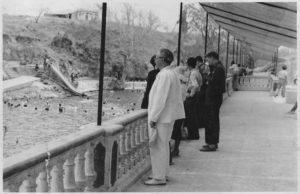
Since the death of Lenin in 1924, a power struggle over not only over the Soviet government but also the international Communist movement ensued with the winner Josef Stalin and the loser Leon Trotsky. But Stalin was not content with merely expelling Trotsky from the party and the country. His megalomaniac paranoia would subsequently require the physical extermination of his opponent, including Trotsky’s family. Many of Trotsky’s relatives, including his first wife and children would be imprisoned, exiled or executed. Initially expelled by Stalin, Trotsky himself fled first to Turkey, then France, where he was initially offered asylum but subsequently rejected and ultimately Norway, which also eventually deported Trotsky to Mexico
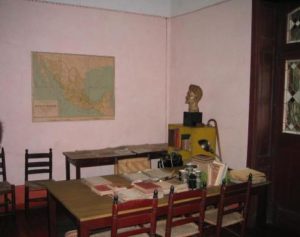
In the winter of 1939, Frida would be reintroduced to a Trotskyite sympathizer named Jacques Mornard. While in Paris, Mornard, who lived in the French capital at the time, claimed that he was moving to Mexico City and aggressively asked her to help secure him a home near hers and an introduction to Leon Trotsky. She refused, explaining that she and her husband had had a falling out with Trotsky and suggested he find a residence on his own. Mornard eventually made his way to Mexico, accompanied by his American girlfriend, Sylvia Ageloff, a trusted member of Trotsky’s inner circle. It would take months, but Mornard, who routinely dropped Sylvia off at the Trotsky compound and did small favors for the entourage eventually ingratiated himself into obtaining a personal meeting with the Soviet exile. Ostensibly, Trotsky was to review a political article that Mornard had written. In the late afternoon of August 20, Leon Trotsky ushered the younger man into his study and began to read his work. Unfortunately for Trotsky, Jacques Mornard was actually Ramon Mercader, a specially recruited Stalinist assassin who took an ice axe from underneath his rain coat and plunged it into Trotsky’s skull. Although the blow did not immediately kill Leon Trotsky, he would die of his injuries within 24 hours.
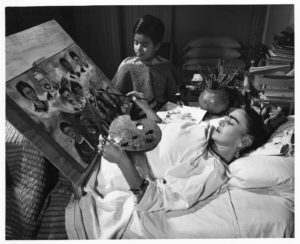
Most of the rest of the decade would be consumed by painting, teaching and attempting to find solutions for the various ailments that plagued her which included a chronically infected hand, her right foot which was troublesome and restrictive, a deteriorating spinal column that was also overwhelmingly painful and even possible syphilis that was diagnosed in the early forties. However, it would be during this time period that Frida would paint some of her most quintessential works.
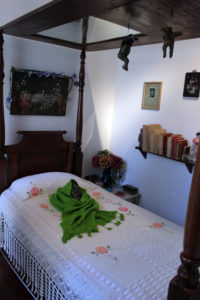
Frida’s degenerative spinal condition would begin to require surgery and a succession of casts designed to allow her mobility. She would fly to New York in May of 1946 for surgery that would fuse four vertebrae with bone and a metal rod. Returning to Mexico, she would be placed in a steel corset and remain bedridden for eight months.
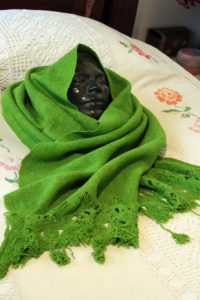
Frida Kahlo celebrated her 47th and last birthday on July 6, 1954. Drawings and notations in her diary indicate that however it would arrive, she knew the end was near. Officially, she would die sometime in the early morning of July 13, from what a doctor officially noted as a “pulmonary embolism.” Wracked by pneumonia, in constant and excessive pain only dulled by massive amounts of opiates, this certainly would not be a far-fetched prognosis. However, on the evening before her death she insisted on giving Diego Rivera an anniversary present, despite the fact that their anniversary was a month away. Later, her nurse would claim that Frida intentionally exceeded the number of painkillers she was supposed to take. Her final diary entry was both ominous and revelatory:
“I hope the exit is joyful-and I hope never to come back.”
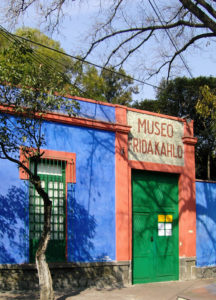
Podcast: Play in new window | Download
Subscribe: RSS
